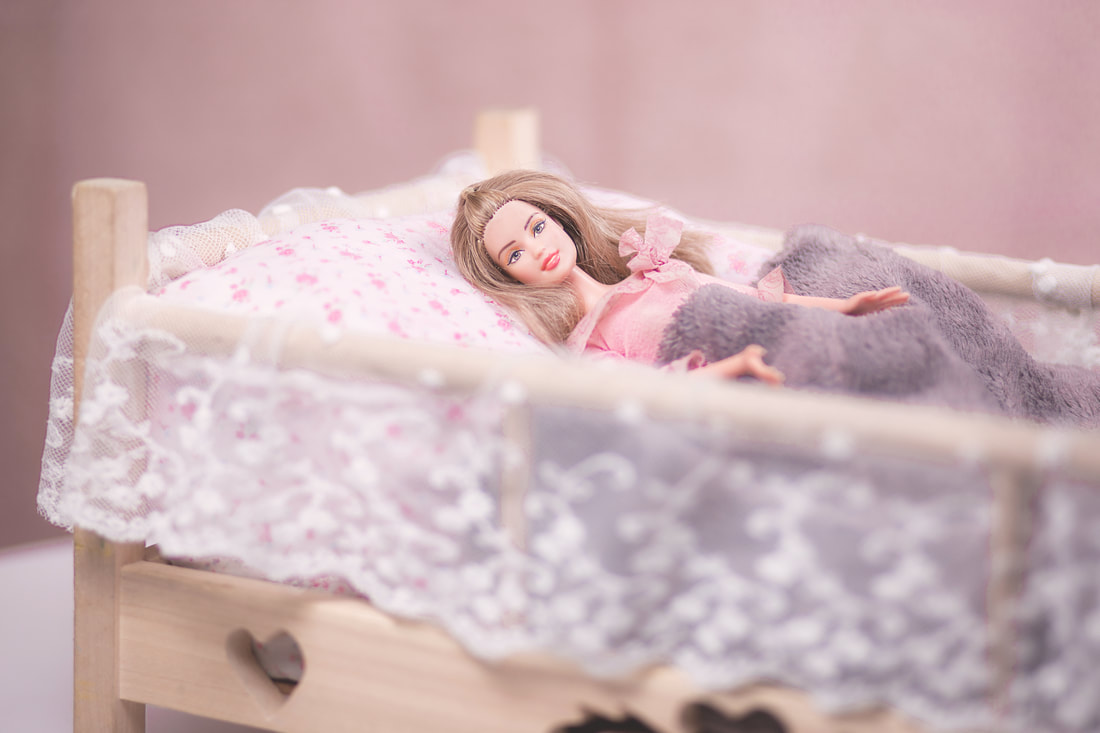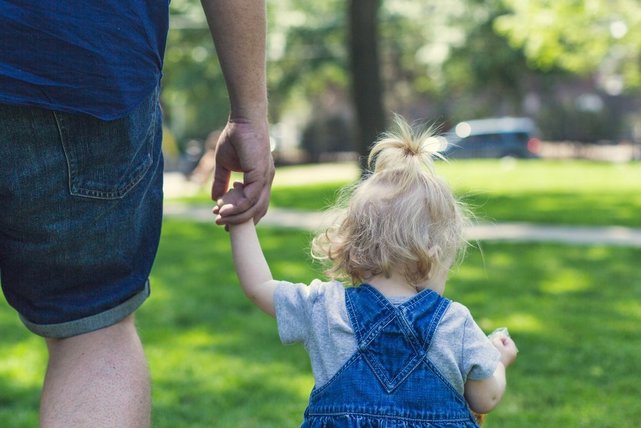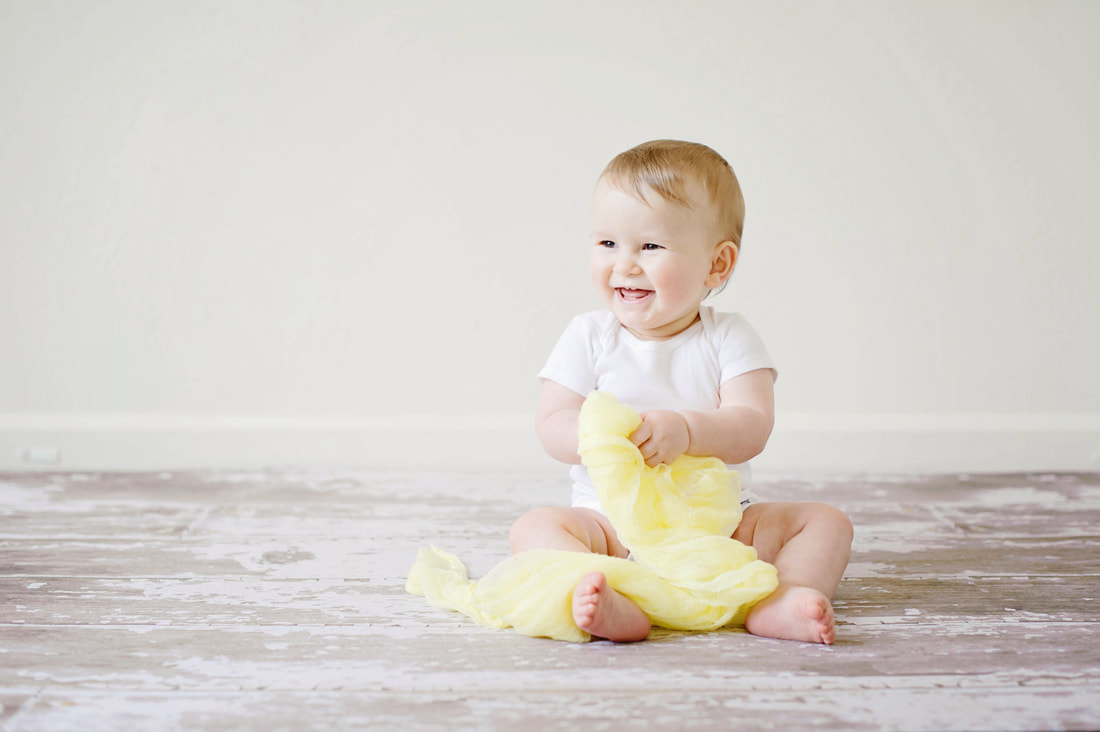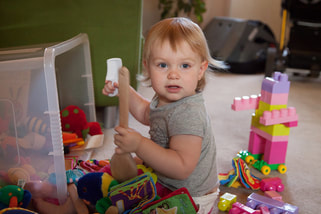|
Back to Blog
Welcome back (again) to my Blog Series: The Importance of Play. If you haven’t read my first two posts in this series: Play and Language Milestones & Blocks & Babies, I suggest you read them first. They will give you a better understanding of typical language milestones and early play/language activities. Let’s pick up where we left off. Blocks and babies are useful far beyond the first two years of life, though the play actions and sequences expand and evolve. Let’s stretch our imagination again as we think about how to use these toys beginning at age 2 ½. And just as before, I will use the Westby Play Scale to help us follow along with typical developmental patterns. 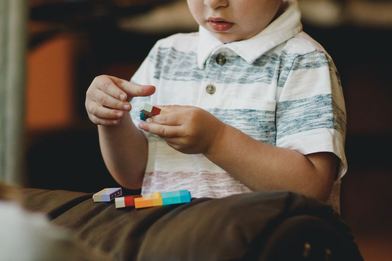 Symbolic Level 4: 2 ½ years Play:
Play:
Play:
Play:
Play:
Being a parent, I know that playing with your child side by side may not always be an option. My suggestion to all parents is to always keep an open ear and an open eye to what your child is doing while they play. Reinforce the skills they have through praise and encourage the development of new skills through modeling. You can contribute to your child’s development, even while you talk to them afar during play or hand them a whisk that you aren’t using while you cook dinner. They may be looking for the right tool to “cook” dessert for their doll. I cannot say enough good things about Blocks & Babies. But Play and Language growth can be facilitated using so many different toys (and everyday objects). If you would like more information about Play & Language, would like updates on new blog posts, or have more questions about speech and language development, Contact Black Oak Therapy. Time spent playing with children is NEVER wasted. -Dawn Lanter
0 Comments
Read More
Back to Blog
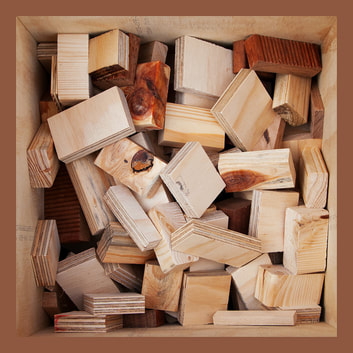 Welcome back to my Blog Series: The Importance of Play. If you haven’t read my first post in this series: Play and Language Milestones, I suggest you check it out before reading this one. Now that I have given you all a little bit of background about the development of play and language skills, I would love to talk to you about some of my favorite toys for play and language development. I get asked frequently about what toys parents should buy for their children. And when you are standing on the toy aisle, I encourage everyone to think about what will promote the most imagination from your child and what toy can be used in many different ways. Two of my favorite toys (and your child may already own them) are Blocks & Babies. The possibilities are endless for ways to play with these and the language skills that you can facilitate by using these toys. I also love these toys because they are two that can be enjoyed from a very early age and for many years to come. Here are some ideas of how to use Blocks & Babies to promote play and language development during the first 2 years. I'm going to continue to use the Westby Play Scale to outline skills are various ages for you to more easily follow along with my suggestions. 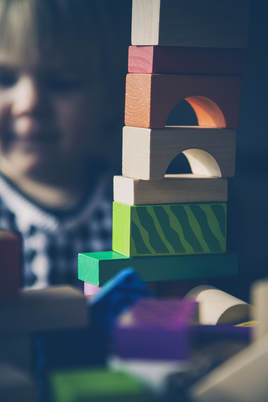 Phase 1: Presymbolic Presymbolic Level 1: 8-12 months Play:
Presymbolic Level 2: 13-17 months Play:
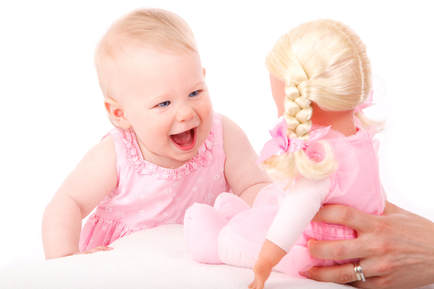 Phase 2: Symbolic Symbolic Level 1: 17-19 months Play:
Symbolic Level 2: 19-22 months Play:
Symbolic Level 3: 2 years
Play:
Play and Language growth are so important for your child’s overall development! I hope you picked up some tips on how to use Block & Babies during the early years can be used to stimulate your child’s play and language. These are really two perfect toys for expanding your child’s play and language skills. Not to mention that they are toys your child will benefit from for years! Make sure to look out for my next post in this Blog Series: The Importance of Play. Post #3 will talk about MORE about Blocks & Babies and how to use these simple toys to stimulate play and language development beyond 2 years of age. If you would like more information about Play & Language, would like updates on new blog posts or have more questions about speech and language development, Contact Black Oak Therapy.
Back to Blog
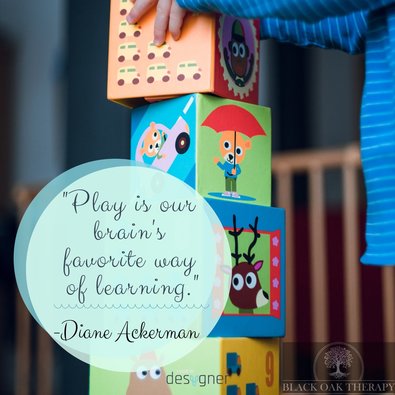 I'm sure many of you have heard professionals talk about the importance of play during childhood. As the American Poet Diane Ackerman said, "Play is our brain's favorite way of learning." I could not agree more. If you have watched a child play, over time you will see their motor skills, cognitive skills, and speech/language skills develop. As a Speech-Language Pathologist (SLP), observing a child's play can provide me with very useful information about their development. In fact, research shows that from birth to 3 or 3.5 years of age, play skills strongly correlate to cognitive development. Extensive research has been conducted by various professionals, including SLPs, to map out play development as it relates to other areas of development (I even conducted my thesis on the topic of play and language development). Arguably the most well-known and frequently-referenced is the Westby Play Scale by Dr. Carol Westby. In her play scale, she describes stages of play from 9 months to 5 years of age. However, even if your child is not meeting these play milestones at the ages described, you can still follow this developmental outline to predict what play and language skills may emerge next in their development. Westby Play Scale Phase 1: Presymbolic Presymbolic Level 1: 8-12 months Play: Awareness of object when not seen (Ex: finds toy hidden under scarf) Means-end behavior: crawls to get toy. Uses some toys appropriately, doesn’t mouth all toys. Language: No true language, but makes requests and commands. Presymbolic Level 2: 13-17 months Play: Purposeful exploration of toys. Hands toy to adult if unable to operate. Language: Makes commands, requests, protests, labels, responds, greets. Phase 2: Symbolic Symbolic Level 1: 17-19 months Play: Autosymbolic- pretends to sleep, eat, drink from empty cup. Uses most objects appropriately, tool use (uses stick to get toy), finds toys invisibly hidden. Language: Beginning of true communication: functional and semantic relations- recurrence, existence, nonexistence, rejections, denial, agent, object, action/state, location. Symbolic Level 2: 19-22 months Play: Symbolic play extends beyond the child’s self. Plays with dolls (feeding, hair brushing), child pretends to be active with more than one person (feeds baby, himself, and mommy), combines two toys (pours tea from pot into cup). Language: Refers to people/objects when not present. Beginning of word combinations: agent-action, agent-object, action-object, attributive, dative, action-locative, object-locative, possessive. Symbolic Level 3: 2 years Play: represents daily experiences (plays house), events or short and isolated, no true sequencing, events short isolated- no true sequencing, block play is build up/ knock down. Language: Uses all of the above in short phrases/sentences. Use morphological markers such as: possessives, plurals, present progressive and can answer Wh- questions. Symbolic Level 4: 2 ½ years Play: represents events less frequently experienced or observed (impressive or traumatic events: doctor/nurse sick child, teacher/child, store/shopping). Language: Responds to Wh- questions appropriately accept WHY and asks WHY often inappropriately and doesn’t attend to the answer, asks Wh- questions usually puts the Wh- at the beginning of the sentence. Symbolic Level 5: 3 years Play: Continues previous stages but play now has sequence (child mixes cake, bakes it, eats it, washes dishes) the sequence evolves though, not planned. Reenacts experiences with new outcomes. Language: Uses past tense (I ate), uses future tense (I’m gonna eat). Symbolic Level 6: 3-3 ½ years Play: Uses toys to create a scene (barn yard), uses blocks for imaginative play and represent various things (block can be a car and an airplane),uses doll as participant in play. Language: descriptive vocab: color, shape, size, texture, gives dolls dialogue (he said), changes speech depending on listener. Symbolic Level 7: 3 ½ - 4 years Play: Begins to problem-solve, plans ahead (what if), builds 3-D structures to represent structures they have seen. Language: Verbalizes intentions and future events (might, will, would, could), conjunctions (and, but, so, because), begins to respond appropriately to WHY and HOW questions. Symbolic Level 8: 5 years Play: PLANS a sequence of pretend events (organizes what he needs ex: other children and objects), coordinates more than one event happening at one time, highly imaginative (sets scene without realistic props), full cooperative play. Language: Uses relational terms (then, when, first, next). NOTE: FULL COMPETENCE OF THESE PLAY SKILLS IS NOT DEVELOP UNTIL 10-12 YEARS References |
Serving the Following Foothill Communities:
Pollock Pines Camino Placerville Diamond Springs Pleasant Valley
Coloma Somerset Garden Valley Georgetown
Rescue Shingle Springs Cameron Park El Dorado Hills Folsom Cool
Pollock Pines Camino Placerville Diamond Springs Pleasant Valley
Coloma Somerset Garden Valley Georgetown
Rescue Shingle Springs Cameron Park El Dorado Hills Folsom Cool
Black Oak Therapy
530-728-0757
1160 Suncast Ln Suite 9
El Dorado Hill, CA 95762
[email protected]
Fax: 530-718-3527
530-728-0757
1160 Suncast Ln Suite 9
El Dorado Hill, CA 95762
[email protected]
Fax: 530-718-3527
Proudly powered by Weebly

